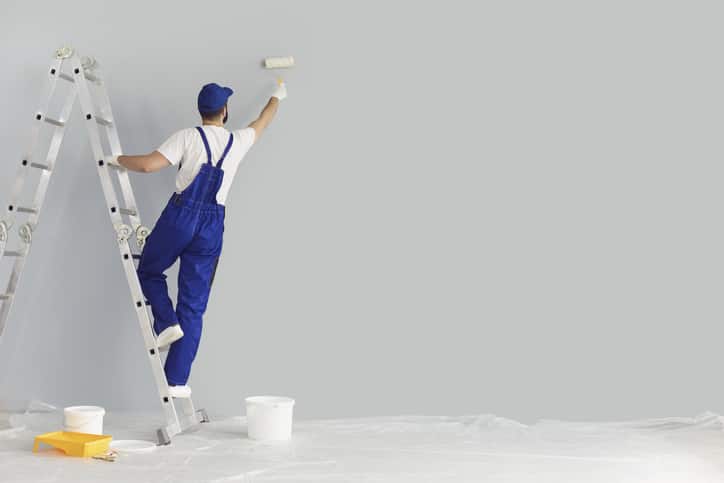Certain occupations are notorious for being dangerous.
Coal miners, police officers, convenience store clerks, and roofers, for example, generally know what they are getting into.
But some work risks are less visible, even if they are just as real.
Studies have found that people in certain occupations are at far greater risk for cancer than the general population. And some are jobs that you might not associate with cancer.
These Occupations Are Linked to Cancer
- Barber/hairstylist. A study published in the International Journal of Epidemiology found that barbers and hairstylists are significantly more likely to develop bladder, larynx, and lung cancer. The National Cancer Institute believes that this may be due to repeated exposure to hair dyes.[i] [ii]
- Nail salon workers. A study published in the journal Environmental Pollution found benzene and formaldehyde present in high levels in many nail salons. Benzene and formaldehyde are powerful carcinogens. The researchers predicted that manicurists would be at higher risk for leukemia.[iii]
- Flight attendant/airline pilot. Spending time high in the air, where the atmosphere is thinner, exposes you to higher levels of cosmic radiation. It can lead to cancer-causing cell mutations. Flight crews have a higher risk of colon, stomach, liver, thyroid, uterine, cervical, and pancreatic cancers. Female flight attendants are 50% more likely than other women to get breast cancer.[iv]
- Painters. Painters are often exposed to paint fumes, which may contain benzene and other carcinogenic chemicals. Some paints contain arsenic. It’s another carcinogen. A study at the Wellington School of Medicine in New Zealand found that painters have higher rates of lung cancer, leukemia, bladder cancer, and liver cancer.[v]
- Firefighters. The smoke firefighters inhale can trigger cancer. Fire-fighting foams are also linked to cancer.
A study in the journal Occupational and Environmental Medicine found that firefighters face a 9% increase in cancer diagnoses compared to the general population. They have a 14% greater risk of dying of cancer.[vi]
- Night-shift worker. “Circadian rhythm” refers to your body’s inner clock. Daily biological cycles are largely controlled by exposure to daylight and darkness. If you stay awake at night and sleep during the day, your circadian rhythm is disrupted. A study from MIT shows that disruption leads to accumulation in your cells of the protein c-myc. It promotes tumor growth.[vii]
- Plastics worker. Chemicals linked to cancer are commonly used in plastics manufacturing. Workers in the plastics industry are at greater risk for kidney, liver, and larynx cancers.[viii]
- Farmer. Having a job that allows you to be outside in the fresh air seems like it would be healthy. But farmers and their family members have higher-than-average rates of leukemia and multiple myeloma. They are also more likely to get stomach, prostate, and brain cancers.
A decades-long research project called the Agricultural Health Study blames exposure to pesticides, engine exhaust, fertilizers, fuels, solvents, and animal viruses.[ix]
Because of sun exposure, agriculture and other outdoor jobs are also linked to higher rates of melanoma and other skin cancers.[x]
Even office jobs are linked to cancer. Occupations that require long hours of sitting are linked to a 24% higher risk of colon cancer. For women, office work raises the odds of endometrial cancer by 32%.[xi]
If you have a job linked to increased cancer risk. Do what you can to protect yourself as much as possible. Talk to your doctor about how you can lower your risk. And be diligent about cancer screening.
Editor’s Note: If you’re worried about cancer, you need to read Independent Healing, your best source for unbiased medical information. Discover the Cancer Kill Code. It’s a secret natural trigger that detonates cancer’s self-destruct button. Find out more HERE.
Related Articles
The Ancient Chinese Breast Cancer Solution
Common Blood Pressure Drugs Raise Risk of Lung Cancer
[i] https://www.ncbi.nlm.nih.gov/pubmed/19755396
[ii] https://www.cancer.gov/about-cancer/causes-prevention/risk/myths/hair-dyes-fact-sheet
[iii] https://www.sciencedirect.com/science/article/abs/pii/S0269749118346487?via%3Dihub#!
[iv] https://ehjournal.biomedcentral.com/articles/10.1186/s12940-018-0396-8
[v] https://www.ncbi.nlm.nih.gov/pmc/articles/PMC1035264/
[vi] https://www.cdc.gov/niosh/firefighters/pdfs/OEM_FF_Ca_Study_10-2013.pdf
[vii] https://news.mit.edu/2016/night-shift-cancer-risk-0728
[viii] https://www.ncbi.nlm.nih.gov/pmc/articles/PMC3327051/
[ix] https://aghealth.nih.gov/
[x] https://blog.dana-farber.org/insight/2019/08/which-professions-are-associated-with-cancer-risk/
[xi] https://www.cbsnews.com/news/too-much-sitting-may-raise-risk-for-certain-cancers-study-finds/

